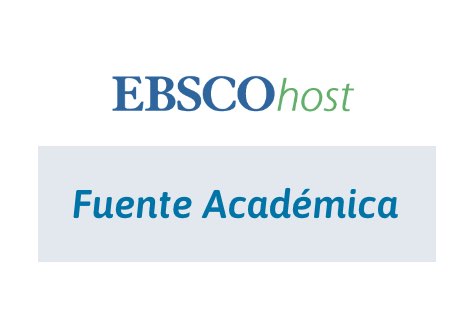Contar y clasificar plantas en maya: el caso de la etnobotánica y la etnomatemática en Yucatán
Palabras clave:
Etnobotánica, Etnomatemática, Maya Yucateco, Clasificadores, Ethnomathematics, Ethnobotany, Yucatec Maya, ClassifiersResumen
Resumen
Este artículo de reflexión toma una postura interdisciplinaria al analizar el contexto del mundo maya yucateco desde dos aproximaciones: la etnobotánica y la etnomatemática. La etnobotánica ilustra la importancia del entorno vegetal en las comunidades mayas y la etnomatemática revela la percepción clasificatoria que tienen los hablantes del maya yucateco de ese mismo contexto social y natural. A través de los años y a pesar de los procesos coloniales y globales, existen estructuras taxonómicas y sistemas numéricos de clasificación que son dinámicos en la región maya de Yucatán. En este trabajo se revela que las circunstancias socio-culturales del mundo maya forman base de estos conocimientos matemáticos y botánicos en Yucatán y, por ende, se señala la necesidad de situar estudios científicos y matemáticos dentro de sus propios contextos socio-culturales, así desafiando la división normativa de disciplinas y promoviendo las aproximaciones descolonizadoras de la etnomatemática y la etnobotánica.
Abstract
This reflection takes an interdisciplinary stance at analyzing the Yucatec Maya world from two approaches: Ethnobotany and Ethnomathematics. Ethnobotany illustrates the importance of the vegetation that is a part of Maya communities and Ethnomathematics shows the perceptions of classification that Yucatec Maya speakers have of that same social and natural context. Throughout history, in spite of the colonial and global contexts, dynamic taxonomic structures and numeric systems of classification still exist in the Maya region of Yucatan. This article highlights how the sociocultural circumstances of the Maya world form the base of this mathematical and botanical knowledge of Yucatan, and consequently, how mathematical and scientific studies must situate their research within this sociocultural context. This study ultimately challenges the normative division of disciplines and promotes a decolonial approach of Ethnomathematics and Ethnobotany.
Descargas
Referencias
Atran, S. (1999). Itzaj Maya Folkbiological Taxonomy: Cognitive Universals and Cultural Particulars. En: Medin, D., & Atran, S. Folkbiology (pp. 119-204). Massachusset: MIT press
Atran, S., Medin, D., & Ross. N. (2004). Evolution and devolution of knowledge: a tale of two biologies. Journal of the Royal Anthropological Institute,10(2), 395-420.
Barrera, A. (1979). La taxonomía botánica maya. Anales de la sociedad Mexicana de Historia de la Ciencia y de la Tecnología, 5, 21-34.
Briceño Chel, F. (2016). La cuantificación actual en el maya yucateco. Estudios de Lingüística Aplicada, 12(19-20), 142-150.
Briceño Chel, F. (1997). La lexicalización de clasificadores numerales en el maya yucateco. En: M. C. Lara Cebada (ed.). Identidades sociales en Yucatán (pp. 255-275), Mérida: Facultad de ciencias antropológicas UADY.
Brooks, L. (2008). The common pot: The recovery of native space in the Northeast (Indigenous Americas). Minneapolis: University of Minnesota Press.
Can Tec, G. (2017, January 14). [Mensaje a Molly Tun]. Mexico: Tizimin, Yucatan.
Edmunson, M. (1986). Heaven Born Merida and its Destiny: The Book of Chilam Balam of Chumayel. Austin: University of Texas Press.
Goyenechea, I. (2006). Sistemática: su historia, sus métodos y sus aplicaciones en las serpientes del género Conopsis. Ciencia Ergo Sum, 14(1), 54-62.
Jacob, W., Cheng, S., & Porter, M. (2015). Indigenous education : Language, culture and identity. Dordrecht: Springer.
Lentz, D. L., Dunning, N. P. & Scarborough, V. (eds.). (2015). Tikal: Paleoecology of an Ancient Maya City. Cambridge: Cambridge University Press.
Mayr, E. (1969). Principles of systematic zoology. New York: Mc-Graw Hill.
Mignolo, W. (1993). Colonial and Postcolonial Discourse: Cultural Critique or Academic Capitalism? Latin American Research Review, 28, 120-134.
Moraña, M., Dussel, E., & Jáuregui, C. (2008). Coloniality at large: Latin America and the postcolonial debate (Latin America otherwise). Durham: Duke University Press.
Osseo-Asare, A. D. (2014). Bitter roots: The search for healing plants in Africa. Chicago: The University of Chicago Press.
Rosa, M., & Orey, D. C. (2014). Interlocuções polissêmicas entre a etnomatemática e os distintos campos de conhecimento etno-x. Educação em Revista, 30(3), 63-97.
Descargas
Publicado
Número
Sección
Licencia
Derechos de autor
Una vez que el artículo es aceptado por la Revista Latinoamericana de Etnomatemática, los/as autores ceden los derechos para publicar y distribuir el texto electrónicamente, así como para archivarlo y hacerlo accesible en línea.
Los autores podrán distribuir su propio material sin solicitar permiso a la Revista Latinoamericana de Etnomatemática, siempre que se mencione que la versión original se encuentra en https://revista.etnomatematica.org
Copyright © 2008, Revista Latinoamericana de Etnomatemática
Todos los contenidos de la Revista Latinoamericana de Etnomatemática se publican bajo la Licencia Creative Commons Atribución 4.0 Internacional y pueden ser usados gratuitamente dando los créditos a los autores y a la Revista, como lo establece esta licencia.











